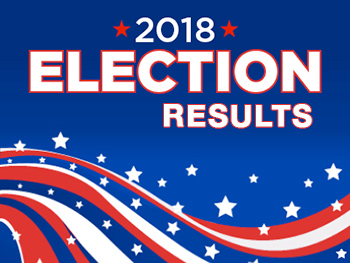By Jim Ellis

What kind of role will super delegates play?
— With several Democrats taking definitive steps toward becoming presidential candidates during this week or at least dropping clear hints that they may well take such action, we can begin surveying not only the political playing field, but also what potentially lies ahead in relation to the delegate count situation.
Currently, it appears that 15 Democrats have either announced or made clear moves toward forming a campaign. They are (alphabetically):
- Former NYC Mayor Michael Bloomberg (NY)
- Sen. Cory Booker (NJ)
- Sen. Sherrod Brown (OH)
- Ex-HUD Secretary Joaquin Castro (TX)
- Rep. John Delaney (MD)**
- Los Angeles Mayor Eric Garcetti (CA)
- Sen. Kamala Harris (CA)
- Gov. John Hickenlooper (CO)
- Gov. Jay Inslee (WA)
- Ex-Gov. Terry McAuliffe (VA)
- St. Sen. Richard Ojeda (WV)**
- Sen. Bernie Sanders (VT)
- Rep. Eric Swalwell (CA)**
- Sen. Elizabeth Warren (MA)
- Andrew Yang (ED; Venture for America)**
** Officially announced
The following dozen individuals have not ruled out entering the presidential race:
- Sen. Michael Bennet (CO)
- Former Vice President Joe Biden
- Gov. Steve Bullock (MT)
- Rep. Tulsi Gabbard (HI)
- Sen. Kirsten Gillibrand (NY)
- Ex-Attorney General Eric Holder (NY)
- Sen. Amy Klobuchar (MN)
- Sen. Jeff Merkley (OR)
- Gov-Elect Gavin Newsom (CA)
- Rep. Beto O’Rourke (TX)
- Ex- Starbucks CEO Howard Schultz
- Former hedge fund manager Tom Steyer
Adding at least several of those from the secondary list, and some others who could also eventually put their names into consideration, the final entry group could well exceed 20 candidates, and possibly even top 25.
We can already expect to see sustained movement in this new cycle because the nomination calendar is beginning to form, and several states with large delegate pools will be voting much earlier than in the past. This adds a different caveat to the coming presidential election when compared with ones run in the most recent past.
The tentative date for the Iowa Caucus is Feb. 3, 2020, with the New Hampshire primary coming on Feb. 11, followed by the Nevada Caucus on Feb. 22, and the South Carolina primary wrapping up the first group of state events on Feb. 29. Those dates are consistent with past campaign cycles for the “first four.”
But, it’s the next group that is intriguing and could either provide a candidate some unstoppable momentum or send the nomination contest into a deadlock until the convention. Because of Democratic Party rule changes adopted in August and prior years, and overlaying what appears to be the likely voting schedule, the latter scenario becomes quite realistic.
The points in question are the elimination of the Super Delegate votes on the first convention roll call in addition to the party no longer having winner-take-all primaries or caucuses. Therefore, all 57 states, territories, and categories that provide delegate votes to candidates are divided proportionally. With so many candidates, no Super Delegates, and no winner-take-all prizes, it appears a difficult task for any one candidate to secure majority support on the first ballot.
Additionally, with 52 percent of the delegates being apportioned prior to the end of March 2020, jumping out to an early lead becomes a virtual requirement to capturing the nomination. The voting schedule is largely responsible for this factor, too, in part because several of the early states house “favorite son” candidates. And, before the field firmly develops, the favorite son, or daughter, contenders will stand a better chance of capturing a significant number of delegates from their home states.
Tentatively scheduled for a March 3 primary or caucus are Alabama, California, Massachusetts, North Carolina, Oklahoma, Tennessee, Texas, Vermont, and Virginia.
Using the 2016 delegate allocation table, while acknowledging that the 2020 official apportionment has not yet been decided, the aggregate regular delegate total from these states, and not including the Super Delegates who won’t be present on the first ballot, would be 1,021, the largest of which are California (422) and Texas (193). From those nine states, as many as seven candidates derive their political base.
On March 10, Michigan, Mississippi, Missouri, and Ohio are potentially scheduled, yielding an aggregate regular delegate total of 330, again based upon the 2016 apportionment. One potential candidate comes from this group of states.
The final early states will vote on March 17. This group contains Arizona, Florida, and Illinois, for a grand total of 388 delegates with no potential candidates, at least at this point in time, hailing from any of these places.
Therefore, a grand total of 1,874 regular delegates according to the 2016 totals, after adding Iowa, New Hampshire, Nevada, and South Carolina to the March states in order to complete the early state grouping, comprises more than half of the 3,560 regular delegate universe.
While the stage could be set for an early culmination to the Democratic nomination process, it is more likely that the process will go into convention without a presumptive nominee clinching majority support on the first ballot. Adding Super Delegate votes on subsequent ballots would then drastically change the entire nomination picture. Therefore, it is already evident that the 2020 Democratic nomination process will feature many different dynamic parts, which we can already see yields a high unpredictability factor.







